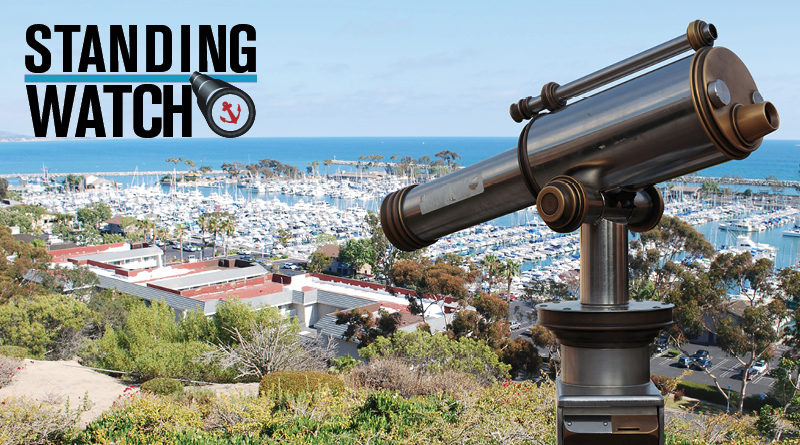Clean Air Action Plan: What’s the Action to Clear the Air?
Port of L.A.’s latest clean air community meeting is juxtaposed with report of commercial ships serving as largest source of pollution.
LOS ANGELES—A group of boaters once gathered at Marina Café in Wilmington. It was March 25, 2016. One of those boaters carried a hand-written sign: #WilmingtonLivesMatter. There was an oil spill nearby just 12 days earlier. A 577-foot vehicle carrier and cargo ship – Istra Ace – was deemed responsible for causing 50 gallons of heavy fuel to spill into the water. Recreational boaters at a marina nearby the spill were damaged as a result. Boat bottoms were covered in oil. Divers were unable to do any work underwater. Fumes from the spill were circulating in the air.
The Wilmington oil spill of 2016 was a reminder to the boaters who dock in Wilmington and San Pedro of the perils they might face while co-existing with commercial ships. In 2016 it was an oil spill caused by one ship. A Los Angeles Times report almost four years later says many of the ships coming into the Port of Los Angeles are the dominant source of air pollution in the region – which includes marinas, restaurants, tourist destinations, offices and residences.
Complicating the Times report: the Port of Los Angeles and Port of Long Beach are jointly working on a Clean Air Action Plan update. The plan seeks to establish a zero-emission future at both ports, which, collectively, are one of the busiest in the world.
Both port districts are hosting a stakeholder advisory meeting on Jan. 15 in San Pedro. Those attending the meeting are promised an update on the San Pedro Bay Ports Clean Action Plan 2017. Two topics will specifically be tackled at this meeting: clean truck rate and a draft economic study.
Most of the assessments, drafts and studies focus on port operations – yet there are thousands of recreational boaters who navigate around the harbor. Management of the port’s commercial shipping traffic – and it’s not just the ships, but the trucks and machinery, too.
Now the Port of Los Angeles will cite several environmental victories during the past 15 years, such as an 87 percent reduction of port-related air pollution emissions in San Pedro Bay for diesel particulate matter. Port of L.A. staff added the harbor area experienced a 58 percent reduction for nitrogen oxides and 97 percent reduction for sulfur oxides.
“Targets for reducing greenhouse gases (GHGs) from port-related sources were introduced as part of the 2017 [Clean Air Action Plan],” according to Port of L.A. staff. “The document calls for the ports to reduce GHGs by 40 percent below 1990 levels by 2030 and 80 percent below 1990 levels by 2050. The Clean Air Action Plan was originally approved in 2006.”
The Los Angeles Times, however, published a story on Jan. 3 about the health risks of ships visiting the harbor area. The story specifically said visiting ships are “poised to become the region’s largest source of smog-causing pollutants in coming years.” People living in the San Pedro-Wilmington area are also exposed to the highest risks of cancer, the Times report continued. There are several liveaboards in Wilmington and San Pedro – so what the two port districts (L.A. and Long Beach) achieve with the Clean Air Action Plan will have an effect on recreational boaters. Then there’s the California Air Resources Board, which published a report stating residents who live near the ports of Los Angeles and Long Beach “could see an increased potential cancer risk from at-berth operations of about 37 percent between 2020 and 2031.”
The Air Resources Board could step in and call for expanded regulations to reduce emissions from ocean-going vessels – and these regulations could go above and beyond what the Clean Air Action Plan would demand. Container and cruise vessels could be obliged to follow emission controls as early as Jan. 1, 2021. Tanker vessels at the ports of Los Angeles and Long Beach could be required to follow specific emissions control requirements by 2027.
The Clean Air Action Plan Update meeting will be held at 425 Palos Verdes Street in San Pedro, Jan. 15; the meeting will start at 10 a.m. The meeting is open to the public and will also be streamed live via webcast. Visit cleanairactionplan.org for more information.


